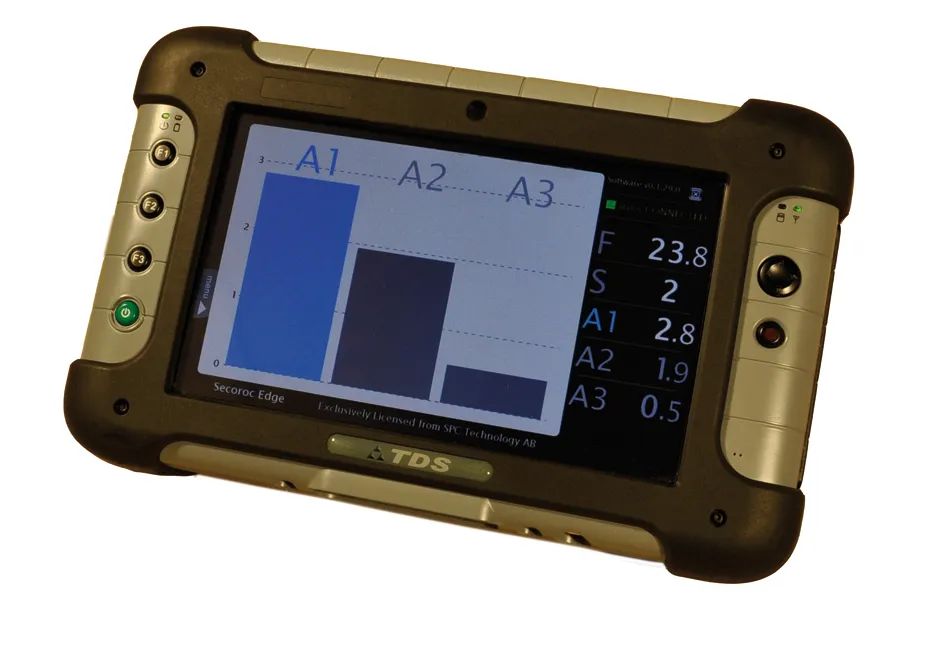Atlas Copco used INTERMAT to launch the Edge Drill Monitor – an innovative system of measuring shock waves from down-the-hole drilling. Information about the hammer and the bit is displayed graphically in real time, allowing the operator to extract maximum performance and efficiency as geology changes during the drilling process, to maintain the correct degree of flushing and avoid tool breakage.
April 16, 2012
Read time: 2 mins

RSS161 Atlas Copco used INTERMAT to launch the Edge Drill Monitor – an innovative system of measuring shock waves from down-the-hole drilling.
Information about the hammer and the bit is displayed graphically in real time, allowing the operator to extract maximum performance and efficiency as geology changes during the drilling process, to maintain the correct degree of flushing and avoid tool breakage.
Edge, which has been developed jointly by Atlas Copco and SPC Technology, is a continuous monitoring system that can be fitted to all types of deep-hole drill rigs that use Secoroc DTH hammers.
“By isolating the hammer vibrations from all the other noise and analysing the frequency and amplitude of the drill bit hitting rock thousands of feet below ground, we are able to provide the drillers with user-friendly real-time information to optimise drilling parameters,” said Ivo Henriksson chief technology officer SPC Technology.
“In a recent customer evaluation programme we reduced fuel cost per drilled foot by 10% and increased the rate of penetration by 11% using the Edge.”
Using the Edge, there is no longer a need for the driller to rely on sound and feel – the monitor will now do that for you.
View more stories
View more videos
Information about the hammer and the bit is displayed graphically in real time, allowing the operator to extract maximum performance and efficiency as geology changes during the drilling process, to maintain the correct degree of flushing and avoid tool breakage.
Edge, which has been developed jointly by Atlas Copco and SPC Technology, is a continuous monitoring system that can be fitted to all types of deep-hole drill rigs that use Secoroc DTH hammers.
“By isolating the hammer vibrations from all the other noise and analysing the frequency and amplitude of the drill bit hitting rock thousands of feet below ground, we are able to provide the drillers with user-friendly real-time information to optimise drilling parameters,” said Ivo Henriksson chief technology officer SPC Technology.
“In a recent customer evaluation programme we reduced fuel cost per drilled foot by 10% and increased the rate of penetration by 11% using the Edge.”
Using the Edge, there is no longer a need for the driller to rely on sound and feel – the monitor will now do that for you.
Hall 5B Stand: F015
RSSView more stories
View more videos






